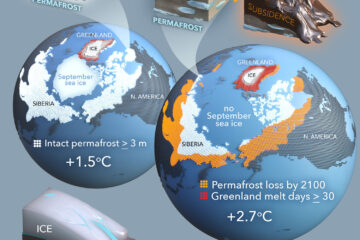Fire‑severity effects on plant–fungal interactions after a novel tundra wildfire disturbance: implications for arctic shrub and tree migration
Background: Vegetation change in high latitude tundra ecosystems is expected to accelerate due to increased wild-fire activity. High-severity fires increase the availability of mineral soil seedbeds, which facilitates recruitment, yet fire also alters soil microbial composition, which could significantly impact seedling establishment.
Results: We investigated the effects of fire severity on soil biota and associated effects on plant performance for two plant species predicted to expand into Arctic tundra. We inoculated seedlings in a growth chamber experiment with soils collected from the largest tundra fire recorded in the Arctic and used molecular tools to characterize root-associated fungal communities. Seedling biomass was significantly related to the composition of fungal inoculum. Biomass decreased as fire severity increased and the proportion of pathogenic fungi increased.
Conclusions: Our results suggest that effects of fire severity on soil biota reduces seedling performance and thus we hypothesize that in certain ecological contexts fire-severity effects on plant–fungal interactions may dampen the expected increases in tree and shrub establishment after tundra fire.
Keywords: Alnus viridis, Arctic tundra, ARISA, Climate change, Fire severity, Fungal internal transcribed spacer (ITS), Picea mariana, Shrub expansion, Treeline


